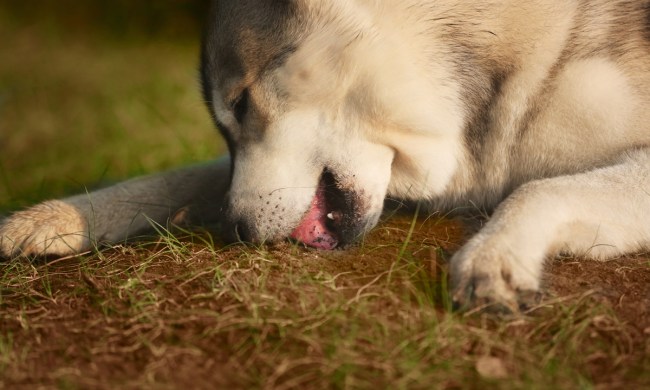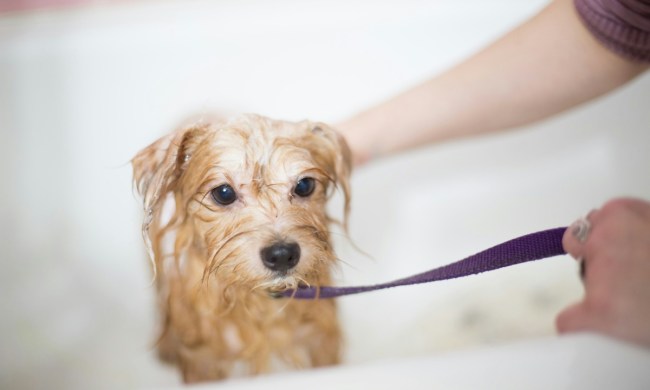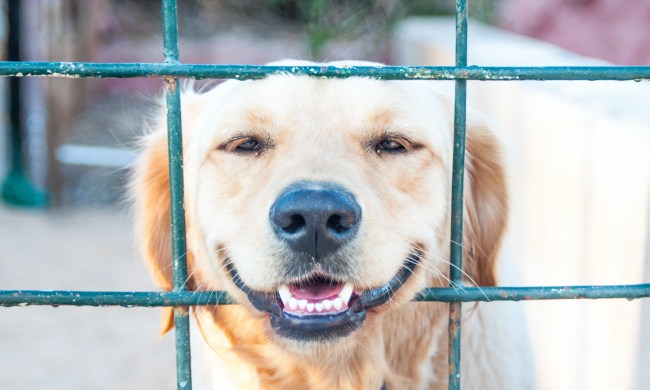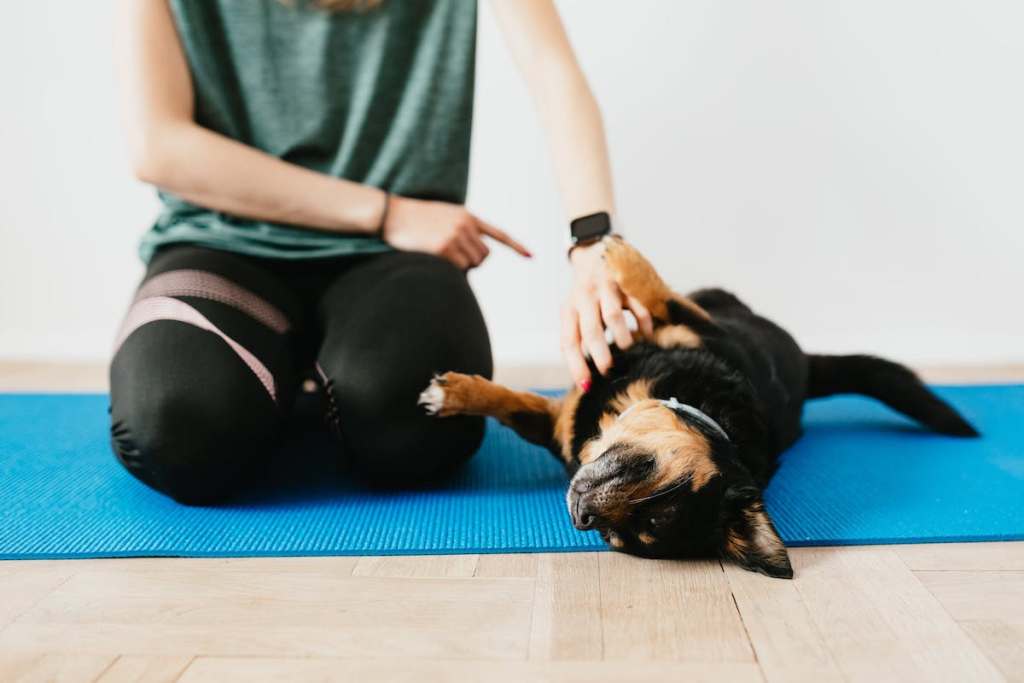
We'll get right to it: All pups need dog behavior training. Just like you would send your kids to school, you should set your pooch up for success by enrolling them in classes. But there's a right way and a wrong way to go about it. If done correctly, your pet will actually enjoy instruction. Here's how to train your dog properly the first time so you don't wind up with chaos (or dog aggression) in your household.
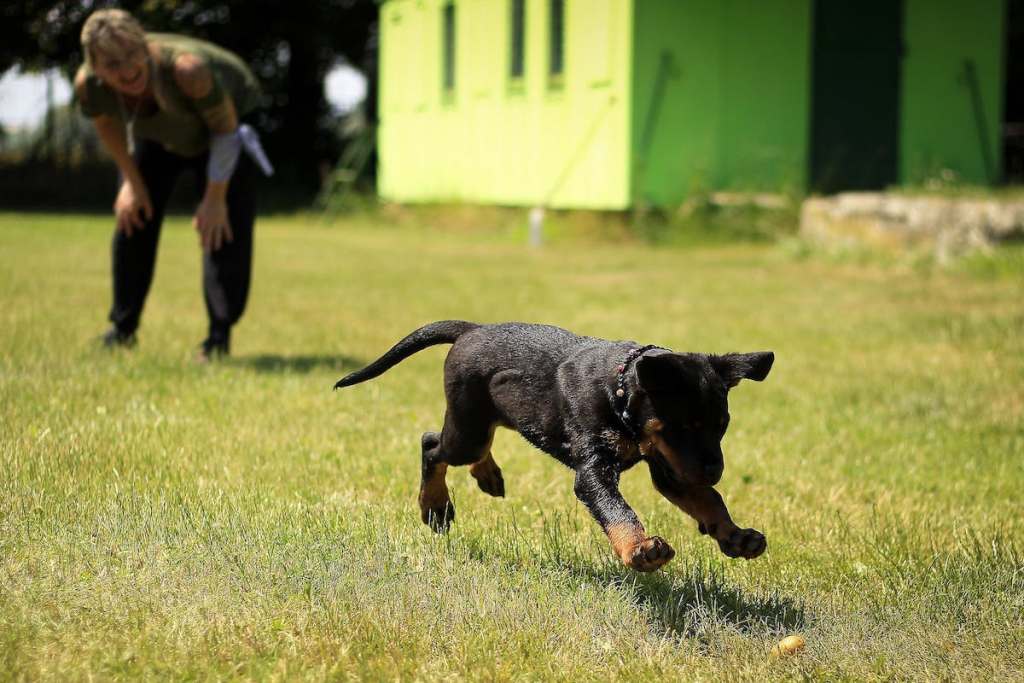
What is dog behavior training?
Really anything that involves working with your animal can fit into this category from teaching your pooch to sit to advanced agility or show commands. The key is to use positive reinforcement at all times — never hit or physically punish an animal. In addition to being cruel, it can actually train dogs to become aggressive themselves and it won't stick. Since you can't explain to a dog why you hurt them, they'll never learn that way.
Instead focus on guiding your dog to do the right thing, praising them when they obey. Start small with the basics like walking on a leash, sitting on command, and going into their crate, and then build on the easy stuff with more advanced instructions.

Where can I find aggressive dog behavior training?
Adopting a rescue is a meaningful thing to do, but sometimes they come with behavior problems already. It's important to assess them before you bring them home to make sure everyone will be safe. Lots of pets are just scared and might growl at humans at first but become lovable companions with some hard work.
When it comes to advanced training, you'll likely want to seek out a professional who can give you feedback on your specific animal. Remember, half of dog training is instructing the human on how to respond properly.
The last thing is to take it slow if your sweet buddy has been abused or neglected. Don't expect them to feel safe with you instantly. By earning their trust, you win over a friend for life.
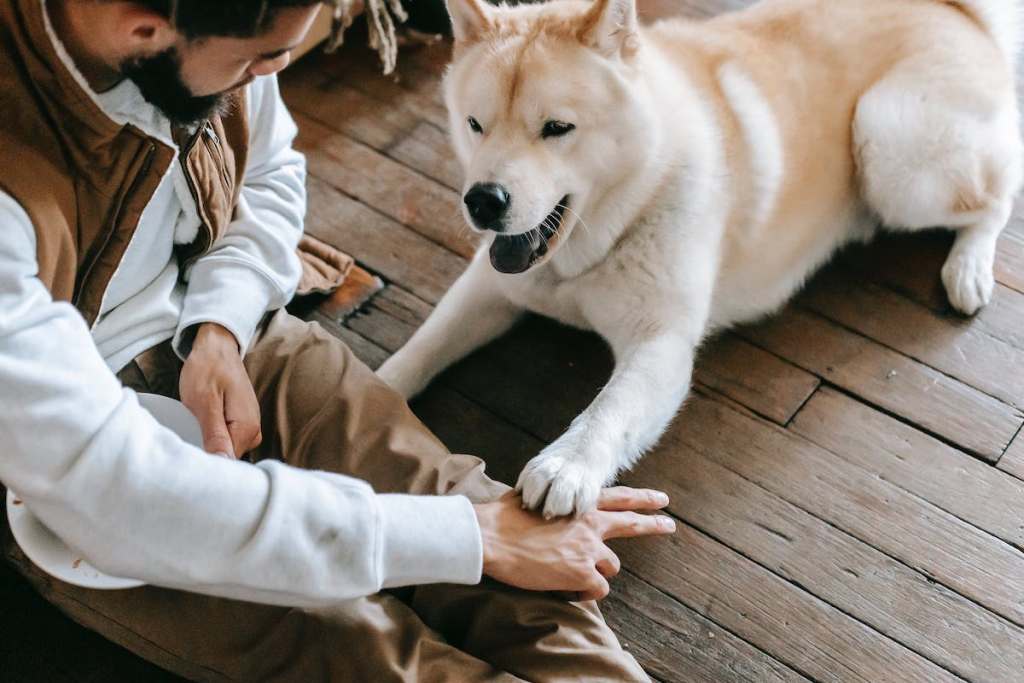
What steps should I follow for successful dog behavior training?
Here's how to train your dog properly from the moment they walk into your house until the end of their long life.
Step 1: Hire an expert.
If it's workable with your schedule and budget, we highly recommend bringing in a professional. Research carefully to make sure you get someone who really knows their stuff. You can also look into training classes both in person and online, which are often cheaper.
Step 2: Set up a schedule.
Just like you, your pup enjoys having a work schedule that they can expect to follow. Try to fit in training when they aren't too tired or hungry, so they have a better time concentrating on the tasks at hand.
Step 3: Stay consistent.
Before you teach your animal anything, figure out which methods you will use and especially what commands you want them to master. For example, nothing confuses a canine more than when their owner can't decide between "down" and "off."
Step 4: Use treats and rewards.
You always want to stick to positive reinforcement, which means heaping on the treats. Get low-calorie snacks so you can dole them out in large quantities without spoiling dinner or putting on unnecessary weight. Tip: Keep small Ziploc baggies full of treats around the house so they're always within reach.
Step 5: Try a clicker.
It doesn't work for every animal but lots of dogs respond well to click training. The idea is to mark the good behavior with a click (you can purchase a device that does this online), which they associate with a reward. That helps your furry friend understand exactly what they did right.
Step 6: Add tools.
There are lots of things that might help this process along, including special harnesses, humane bark collars, pointing sticks, fences, and crates. Use as many of these that you find brings out success for your pooch — every animal is different.
Step 7: Keep it up (for life).
When you add a puppy or rescue pooch to your home, you'll have to do a lot of training in the first few weeks and months. However, it doesn't stop there. You may want to occasionally go to a refresher course or simply set aside a few minutes daily to review. Also, it's not true that an old dog can't learn new tricks — it just takes longer.
Your beastie is unique and that means they want a bespoke training method that suits their particular style. You should adjust your approach depending on how they respond. For example, some dogs just want praise and don't really care about the treats, while others are more food motivated. You also should discover pretty quickly whether your rescue will take well to more advanced material or if higher education doesn't suit them particularly well.
No matter what specific methods you land on, follow your pet's lead and try not to get frustrated or start yelling. They won't understand your garbled words but might get spooked by the tone. You're working together on this adventure!

